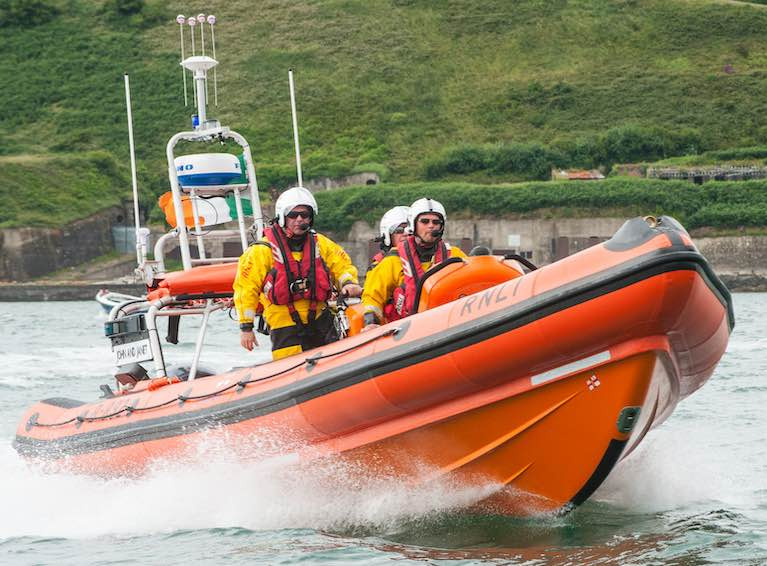The volunteers of Crosshaven RNLI lifeboat were tasked this evening to a report of a person in the water in the Ringabella/Fountainstown area.
The crew received the pager alert at 7.32 pm and were en route when information was received that two persons were in the water and clinging to a marker buoy near the back strand at Fountainstown.
On arrival, one adult had been taken from the water by a RIB which responded to the Coast Guard PAN PAN radio call and was handing the casualty into the care of Crosshaven Coast Guard at Fountainstown beach. A local kayaker was first on scene and rescued the child before handing the casualty over to Crosshaven Coast Guard before returning to the adult male. The RIB with the five teenagers arrived on scene and removed the adult from the water to the RIB and took the casualty ashore to be cared for by the Coast Guard. Rescue 117 helicopter transported the two casualties to Cork University Hospital for a check-up.
The crew on tonight's service were Helm Ian Venner with Aoife Dinan, Susanne Deane and Jon Bermingham. Launch crew was Gary Heslin and Richie Leonard.
The RIB which responded was crewed by five 16-year-olds who were fishing in White Bay when they heard the PAN PAN call and responded immediately to the incident.
Coincidentally, three of the RIB crew have RNLI connections. Jamie Venner is the son of Ian Venner who was also the Helm on tonight's service, Cillian Foster is a brother to Caomhe Foster who is also Crosshaven RNLI crew and Richard McSweeney is the son of former Baltimore RNLI crew member Ciaran McSweeney. The other crew on board were Kate Horgan and Harry Pritchard.
This article was updated on Monday, August 24th 2020
































































